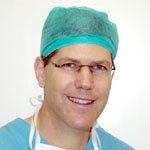עשיתי MRI לכל הגב
דיון מתוך פורום ניתוחי עמוד שדרה
היי - עשיתי MRI לגב כולו התוצאות לא משהו. אני עושה הרבה ספורט ואני בן 37. אין לי כאבים אבל אני רוצה הנחיות איך אולי אני יכול לשפר את המצב: מה עליי להימנע ומה עליי לעשות? אני לא גר בארץ ואת הבדיקות עשיתי באוקראינה התוצאות ברוסית. אני יכול לשלוח את כל הצילומים אם צריך. הדוחות מתורגמים מרוסית לאנגלית בגוגל טרנסלייט ================================================== Thoracic kyphosis saved. In the study of the thoracic spine are marked changes in the following segments : Th1 / 2 - several bulging intervertebral disc posteriorly . Sagittal spinal canal size of 12 mm (norm> = 13 mm) Th6 / 7 - protrusion of intervertebral disc posteriorly to 2 mm, paramedial right. Thickened posterior longitudinal ligament and partially peeled . Sagittal spinal canal size of 18 mm (norm> = 13 mm) dural sac deformed. Th11/12 - several bulging intervertebral disc posteriorly , medially. Sagittal spinal canal size of 18 mm (norm> = 13 mm) Throughout marked deformation adjacent to the intervertebral disc vertebral degenerative end plates and the presence of osteophytes , as hypointense signal on T1- and T2 -weighted tomograms at the edges of the vertebral bodies . Marked depressions ( cartilaginous SHmorlja nodes ) in the middle parts of the end plates tel Th9 -L1 vertebrae up to 2 mm , with an irregular outline. The intervertebral discs are uneven height and decreased signal in T2 mode , due to degenerative changes and dehydration. On the part of the spinal cord visible lesions were found. Surveillance - intermuscular tissue back muscles paramedial left at a distance of 55 mm from the spinous processes of the vertebrae of Th1 and Th2 visualized plot changes MRI signal in T1 mode izointensivny hyperintensive and on T2 -weighted images , with a fairly clear outline , size 39h15h9 mm. Nature of the signal from adjacent muscles is not changed. It is recommended to consult an orthopedic and soft tissue ultrasound back ( thoracic spine) Conclusion: osteochondrosis of the thoracic spine , complicated back intervertebral disc protrusion Th6 / 7. Cartilaginous nodes ( SHmorlja ) tel Th9 -L1 vertebrae. =============================================================================================== Cervical lordosis saved. Marked curvature of the spine in the coronal plane with the left arc to an angle of 5 &#730;. In the study of the cervical spine changes are determined by the following segments : C3 / 4 - a few bulging intervertebral disc posteriorly . Sagittal spinal canal size of 12 mm (norm> = 14 mm). C4 / 5 - protrusion of the intervertebral disc to 2 mm posterior , medial , against diffuse posterior bulging disc . Backup space at that level of 11 mm. ( Sagittal spinal canal size in normal > = 14 mm). Dural sac is deformed. C5 / 6 - protrusion of the intervertebral disc to 2 mm posterior , medial , against diffuse posterior bulging disc . Backup space at that level of 11 mm. ( Sagittal spinal canal size in normal > = 14 mm). Dural sac is deformed. C6 / 7 - protrusion of the intervertebral disc to 2 mm posterior , medial , against diffuse posterior bulging disc . Backup space at that level of 11 mm. ( Sagittal spinal canal size in normal > = 14 mm). Dural sac is deformed. Throughout marked deformation adjacent to the intervertebral disc vertebral degenerative end plates and the presence of osteophytes , as hypointense signal on T1- and T2 -weighted tomograms at the edges of the vertebral bodies . The intervertebral discs are uneven height and decreased signal in T2 mode , due to degenerative changes and dehydration. On the part of the spinal cord visible lesions were found. Asymmetry in the lumen of the vertebral arteries V2 segments (D <S). Right vertebral artery enters the channel of the transverse processes of the body at the level of C5 vertebra. Conclusion: osteochondrosis of the cervical spine , complicated posterior intervertebral disc protrusions S4/5-S6/7 , with symptoms secondary to spinal stenosis . Scoliosis I degree (by Chaklin ) . ============================================================================================ Lumbar lordosis saved. Throughout marked deformation adjacent to the intervertebral disc vertebral degenerative end plates and the presence of osteophytes , as hypointense signal on T1- and T2 -weighted tomograms at the edges of the vertebral bodies . Marked depressions ( cartilaginous SHmorlja nodes ) in the middle parts of the end plates tel Th12-L4 vertebrae up to 3 mm , semi-circular shape with an irregular outline. Observed deformation right poluduzhki L5 vertebra. In interarticular intervals right L5 vertebra poluduzhki visualized cross section for signal characteristics similar to connective tissue. The intervertebral discs are uneven height and decreased signal in T2 mode , due to degenerative changes and dehydration. Intervertebral discs L2 / 3 , L3 / 4 , L4 / 5 and L5/S1 several bulging posteriorly . Sagittal spinal canal size within the norm ( > 16-18 mm ) . Medullary cone is at the proper level , homogeneous structure , without visible areas MR signal changes . The structure and location of the cauda equina without features. Surveillance - mild expanded pyelocaliceal renal system . Recommended to perform renal ultrasonography . Conclusion: osteochondrosis of the lumbosacral spine. Cartilaginous nodes ( SHmorlja ) tel Th12-L4 vertebrae. Can not exclude right- spondylolysis L5 vertebra. ===========================================================================================

